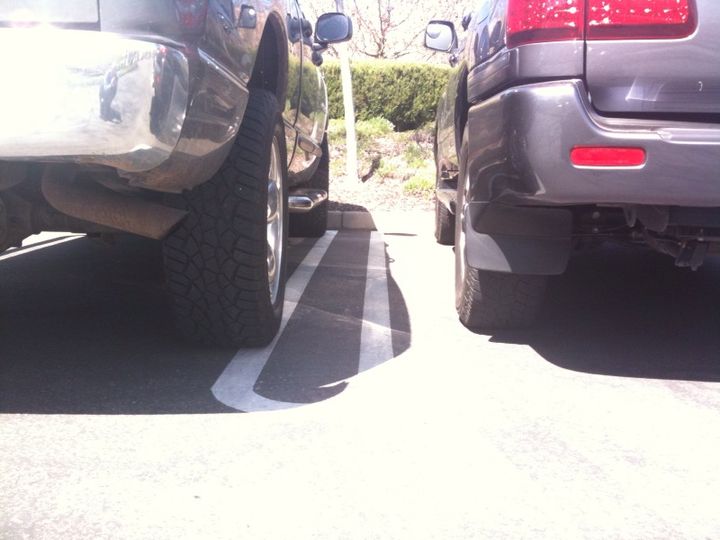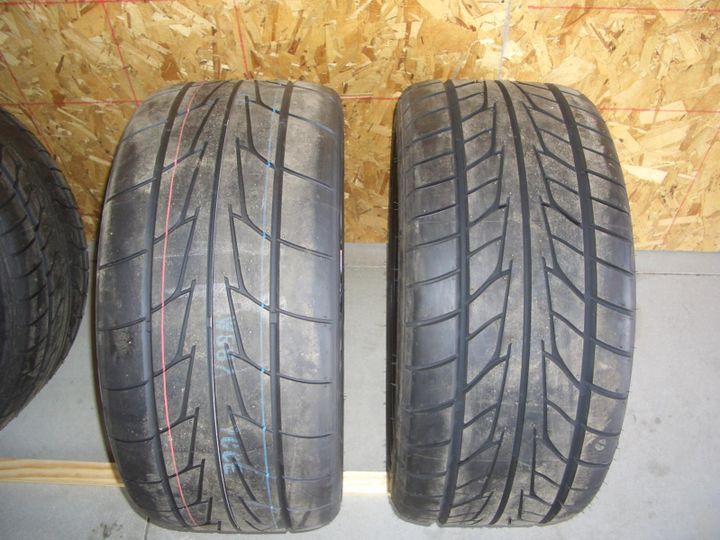


When it comes to outfitting your vehicle with the right tires, the choice between 285 and 275 sizes can significantly impact performance, handling, and overall driving experience. This comprehensive article delves into the nuances of these two popular tire sizes, exploring their distinct characteristics and the trade-offs involved in selecting one over the other.

The primary distinction between 285 and 275 tires lies in their width, with the 285 size being approximately 10 millimeters (0.39 inches) wider than its 275 counterpart. However, the differences extend beyond just the width, encompassing various aspects that can influence your driving experience.
| Characteristic | 285 Tires | 275 Tires |
|---|---|---|
| Width | 285 mm | 275 mm |
| Example Diameter (285/70R17) | 33.46 inches (850 mm) | 32.92 inches (836 mm) |
| Example Circumference (285/70R17) | 105.13 inches (2670 mm) | 100.25 inches (2546 mm) |
| Visual Appearance | Wider, more aggressive stance | Narrower, less aggressive stance |
Wider 285 tires offer a more substantial footprint on the road surface, resulting in enhanced traction and grip. The larger contact patch improves braking performance and stability, making these tires a popular choice for off-road enthusiasts and drivers seeking maximum control in challenging conditions.
While the width is the most apparent difference, the overall diameter and circumference of 285 and 275 tires can vary depending on the aspect ratio and wheel size. The table above provides an example comparison for tires with the same aspect ratio and wheel size.
When installed on a vehicle, the wider 285 tires create a noticeably more aggressive and muscular stance compared to the narrower 275 tires. This visual impact can contribute to an off-road-ready appearance, appealing to drivers who prioritize a rugged and capable look for their vehicles.
Beyond the physical dimensions, the choice between 285 and 275 tires can significantly influence a vehicle's performance characteristics, including traction, grip, handling, and steering responsiveness.
As mentioned earlier, the wider 285 tires offer superior traction and grip, particularly in off-road conditions or during cornering maneuvers. The larger contact patch provides increased surface area for the tire to grip the road, enhancing braking performance and overall stability.
Off-road traction is significantly improved with 285 tires due to the larger contact patch.
Cornering grip is also enhanced, allowing for better control and stability during turns.
Braking performance can be improved with the increased traction provided by 285 tires.
While the improved traction of 285 tires is undeniable, their increased width and weight can negatively impact handling and steering responsiveness. Vehicles equipped with 285 tires may feel more sluggish or less agile, especially at lower speeds, compared to those with narrower 275 tires. The latter can provide a more responsive driving experience due to their lighter weight and reduced rolling resistance.
285 tires can make the vehicle feel less agile and responsive, particularly at lower speeds.
The increased weight and rotational mass of 285 tires can contribute to a more sluggish handling experience.
275 tires offer a more responsive and nimble driving experience due to their lighter weight and reduced rolling resistance.
The choice between 285 and 275 tires can also have implications for fuel efficiency, an important consideration for many drivers.
Wider and heavier 285 tires generally exhibit higher rolling resistance compared to their narrower 275 counterparts. This increased resistance can lead to decreased fuel efficiency, as the engine must work harder to overcome the additional rolling resistance.
Higher rolling resistance of 285 tires results in increased energy consumption by the engine.
This increased energy consumption translates to lower fuel efficiency compared to 275 tires.
Real-world examples from drivers who have switched between 275 and 285 tires provide valuable insights into the potential fuel economy impact.
| Tire Size Switch | Fuel Economy Impact |
|---|---|
| 275 to 285 | Decrease of 1-3 mpg, some report even higher drops, especially in city driving |
| 285 to 275 | Slight improvement in fuel efficiency |
Many users report a decrease of 1-3 miles per gallon (mpg) when switching from 275 to 285 tires, with some experiencing even more significant drops, especially in city driving conditions. Conversely, switching from 285 to 275 tires may yield a slight improvement in fuel efficiency.

When considering the installation of wider 285 tires, it's crucial to evaluate the fitment and clearance requirements for your specific vehicle.
In some cases, the increased width of 285 tires may cause rubbing against the fender wells or suspension components, particularly if the vehicle has not undergone any suspension modifications. To ensure proper clearance, trimming or the installation of a leveling kit or lift kit may be necessary.
Fender well clearance issues can arise with 285 tires, leading to rubbing or interference.
Suspension components may also come into contact with the wider 285 tires, causing clearance problems.
Modifications such as trimming, leveling kits, or lift kits may be required to accommodate 285 tires.
On the other hand, narrower 275 tires are generally considered a safe option for most vehicles without the need for additional modifications. However, it's always recommended to consult your vehicle's specifications and clearances to ensure proper fitment and avoid any potential issues.
275 tires typically fit most vehicles without the need for modifications.
Consulting your vehicle's specifications and clearances is still recommended to ensure proper fitment.
The weight of tires can have a significant impact on various aspects of a vehicle's performance and handling characteristics.
Wider 285 tires tend to be heavier than their 275 counterparts, even when comparing the same tire model and construction. This increased weight contributes to higher unsprung weight, which refers to the weight of the components that are not supported by the vehicle's suspension system.
285 tires are generally heavier than 275 tires of the same model and construction.
The increased weight of 285 tires contributes to higher unsprung weight.
Higher unsprung weight can negatively affect ride quality, handling, fuel economy, and the wear on suspension components and brakes. The additional rotational mass of heavier tires requires more energy to accelerate and decelerate, potentially leading to increased wear and tear over time.
Ride quality can be compromised due to the higher unsprung weight of 285 tires.
Handling characteristics may be affected by the increased rotational mass of heavier tires.
Fuel economy can suffer as more energy is required to accelerate and decelerate the heavier tires.
Suspension components and brakes may experience increased wear due to the additional weight and rotational mass.
When considering the switch between 275 and 285 tires, availability and cost are important practical factors to consider.
Both 275 and 285 tire sizes are widely available from major tire manufacturers, offering a variety of options for different vehicle applications and budgets. However, 275 tires may be more readily available for certain tire models or specific vehicle fitments.
Major tire manufacturers offer both 275 and 285 tire sizes.
A wide range of options is available for different vehicle applications and budgets.
275 tires may have better availability for certain tire models or vehicle fitments.
In general, 275 tires tend to be less expensive than their 285 counterparts, especially when comparing similar tire models and constructions. This cost difference can be a significant consideration for drivers operating on a budget or those who prioritize cost-effectiveness over maximum performance.
275 tires are generally less expensive than 285 tires of similar models and constructions.
Cost can be a significant factor for drivers on a budget or prioritizing cost-effectiveness.
In addition to the technical specifications and performance characteristics, it's valuable to consider the real-world experiences and recommendations of drivers who have used both 275 and 285 tires.
Many users recommend 275 tires as a balanced choice, offering an improved off-road capability and more aggressive look compared to stock tires while minimizing the potential drawbacks associated with wider 285 tires, such as reduced fuel economy and handling compromises.
Improved off-road capability compared to stock tires.
More aggressive look than stock tires.
Minimizes drawbacks of 285 tires, such as reduced fuel economy and handling compromises.
For those prioritizing maximum traction and off-road performance, 285 tires are often recommended by experienced users. These wider tires are praised for their improved grip and stability in challenging terrain, although they may come with trade-offs in on-road handling and fuel efficiency.
Recommended for maximum traction and off-road performance.
Improved grip and stability in challenging terrain.
Trade-offs in on-road handling and fuel efficiency.
Ultimately, the choice between 285 and 275 tires is a personal decision that depends on individual priorities, driving conditions, and vehicle specifications. By carefully weighing the trade-offs and considering the insights from experienced users and professionals, you can make an informed decision that aligns with your needs and preferences, whether you prioritize off-road capability, on-road handling, fuel efficiency, or a combination of these factors.
The primary difference is the width, with 285 tires being approximately 10 millimeters (0.39 inches) wider than 275 tires. This width difference impacts various aspects like traction, handling, and fuel economy.
Wider 285 tires offer superior traction and grip due to their larger contact patch, providing enhanced braking performance and stability, especially in off-road conditions or during cornering maneuvers.
Yes, the increased width and weight of 285 tires can make the vehicle feel less agile and responsive, particularly at lower speeds, compared to narrower 275 tires.
Wider 285 tires generally exhibit higher rolling resistance, leading to decreased fuel efficiency as the engine must work harder to overcome the additional resistance.
Wider 285 tires may cause rubbing or interference with fender wells or suspension components, potentially requiring modifications like trimming, leveling kits, or lift kits for proper clearance.
Heavier 285 tires contribute to higher unsprung weight, which can negatively affect ride quality, handling, fuel economy, and wear on suspension components and brakes.
Both 275 and 285 tire sizes are widely available from major manufacturers, but 275 tires may have better availability for certain tire models or vehicle fitments.
Generally, 275 tires tend to be less expensive than their 285 counterparts, especially when comparing similar tire models and constructions.
Many users recommend 275 tires as a balanced choice, offering improved off-road capability and a more aggressive look compared to stock tires while minimizing drawbacks like reduced fuel economy and handling compromises.
For those prioritizing maximum traction and off-road performance, 285 tires are often recommended by experienced users due to their improved grip and stability in challenging terrain, despite potential trade-offs in on-road handling and fuel efficiency.

Sarah isn't your average gearhead. With a double major in Mechanical Engineering and Automotive Technology, she dived straight into the world of car repair. After 15 years of turning wrenches at dealerships and independent shops, Sarah joined MICDOT to share her expertise and passion for making cars run like new. Her in-depth knowledge and knack for explaining complex issues in simple terms make her a valuable asset to our team.









